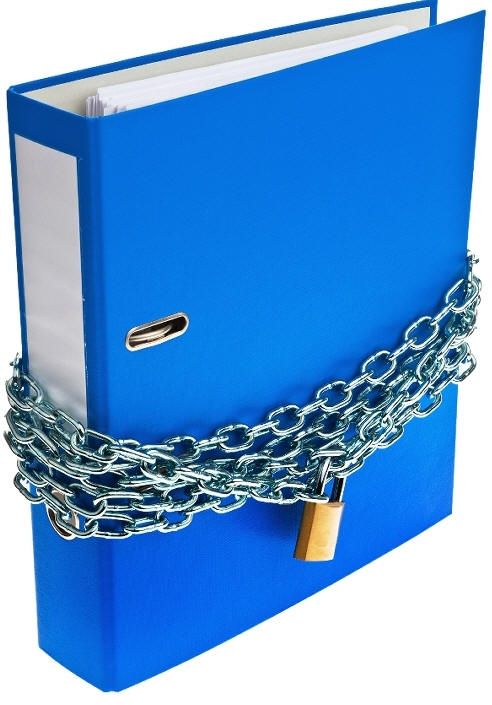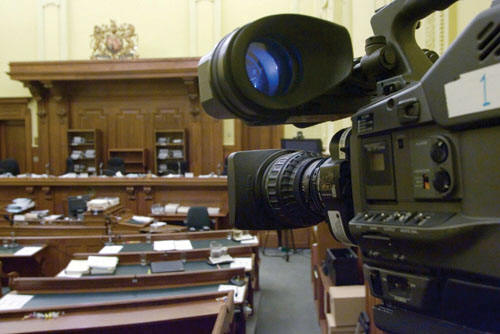|
|
|
|||
|
|
Protecting Your Intellectual Property From Trading Risks Running a business has its risks – the ultimate being the entity going out of business and having to shut up shop. The recent recession increased such a risk for many businesses with some being unable to cope with the economic pressures and consequently becoming insolvent.
When a business becomes insolvent and is subsequently liquidated, the assets of the entity are seized and sold with the view to pay creditors. Intellectual property assets are no exception and assets such as domain names, trademarks and copyrights as well as concepts relating to branding are often lost in the process as well. More often than not, such intellectual property assets are irreplaceable. It is therefore important that time and effort is invested in protecting such assets in the event that a company is put into liquidation.
The separation of assets through the use of limited liability companies is therefore a more suitable vehicle for the purposes of intellectual property asset protection. Separate ownership using companies requires the establishment of two or more registered companies where one company, Company A, owns the intellectual property and the other company, Company B, acquires a licence from Company A to sub-licence the intellectual property to clients. |
|
Inside this edition
Protecting Your Intellectual Property
All ownership of the intellectual property assets are vested in Company A, and Company B at no stage actually owns the intellectual property. In the event that Company B becomes insolvent, its creditors are not able to lay claim to the intellectual property assets by virtue of it being owned by a separate legal entity, Company A.
This model is particularly suited to software companies as they don’t sell their products, but rather license them by granting a customer non-exclusive rights to use the software. The actual software remains the property of the original owner. The separate-ownership model can also be tailored to suit most business genres.
Although appropriate licences and insurance policies are worthy components of risk management, many policies do not guard against insolvency of a company or bankruptcy. As a consequence, while some effort may be required in setting up an appropriate structure, separating valuable intellectual property could be well worth the time and money.
|
|
|
|
|
|||
|
|
Introduction The Alcohol Reform Bill (the ‘Bill’), if passed by Parliament, will repeal and replace the Sale of Liquor Act 1989. While many of the provisions of the Sale of Liquor Act 1989 are carried over, the Bill proposes a major revamp of our primary liquor laws. Some of the significant and more controversial areas of change include the minimum age for the purchase and consumption of alcohol, maximum trading hours for suppliers of alcohol, local alcohol policies, and applications for licences. In addition, the Bill proposes to replace the current Liquor Licensing Authority with the Alcohol Regulatory and Licensing Authority. The proposed name for the Bill is, “Sale and Supply of Alcohol Act”. It will amend parts of the Summary Offences Act 1981, the Children, Young Persons and their Families Act 1989 and Local Government Act 2002, among others.
The Bill is in response to the Law Commission’s Report published last year titled “Alcohol in Our Lives; Curbing the Harm”. The report recognised the increasing toll that intoxication and excessive drinking is having on the nation’s level of health. The Bill resultantly is drafted to facilitate and encourage a safer and more responsible drinking culture, especially among young people.
Age The Bill proposes a ‘split-age’ approach in relation to the purchase of alcohol. It proposes to increase the minimum age for purchase of alcohol from off-licensed premises to 20 years of age or over while the age restriction on purchase of alcohol from on-licensed premises remains unchanged at 18 years. Off-licensed premises include establishments such as supermarkets, grocery stores and bottle shops. On-licensed premises include cafés, bars, restaurants and entertainment venues.
Trading Hours The Bill also prescribes maximum trading hours for liquor suppliers. Default trading hours are set between 8am to 4am on the following day for on-licensed premises and between 7am to 11pm for off-licensed premises. However, newly introduced Local Authority Policies (LAP) may impose more lenient or stringent trading hours than the prescribed default trading hours in the Bill.
|
|
Local Authority Policies (LAP) The Bill empowers local communities to cater specifically to the needs of their community by adopting local alcohol policies. LAPs allow local communities to have more say on the concentration, location and trading hours of alcohol outlets in the community.
Advertising Currently, the Alcohol Industry is allowed to regulate its own advertising. The Bill seeks to change this by strengthening advertising controls relating to liquor and alcoholic products. For example, promotions that involve free distribution of alcoholic products will be deemed to be unacceptable.
Conclusion The new Bill undoubtedly presents some challenges as the Government tries to balance the interests of its citizens while trying to maintain a sustainable liquor industry within which manufacturers and retailers are not prejudiced. The Select Committee is due to report back to Parliament by the end of August 2011.
|
|
|
|
|
|||
|
|
The Crimes Amendment Bill (no. 2) (the ‘Bill’) was introduced to Parliament by the Minister of Justice on 12 April 2011. Among other issues contained in the Bill, one of the major areas of proposed change relates to the protection of children. The Bill seeks to significantly alter the current legislation as it pertains to child abuse and imposes greater expectations on adults who are in contact with children and vulnerable adults alike.
Duty to Protect One of the most significant changes contained in the Bill is the imposition of a legal duty on those who live with a child and those who know or ought to know that the child is at risk of death, grievous bodily harm, or sexual assault. That legal duty requires those people to take reasonable steps to protect the child from that risk. Failure to take such steps will result in an offence that is punishable by imprisonment for a maximum of 10 years. Specifically, a parent or person over the age of 18 may be found liable if he or she is:
|
|
Another significant provision in the Bill provides that all parents are under the same obligation to protect their children regardless of the parent’s age. This means that a parent who is under the age of 18 is still liable to the same extent as a parent over the age of 18. It is hoped that extending such responsibilities to teenage parents will prompt young parents to seek help earlier in situations where they are unable to cope with the pressures of parenthood.
Sexual Grooming The offence of sexual grooming is also expanded to include instances where an offender is communicating with an undercover police officer while believing them to be a person under the age of 16.
Penalties The maximum penalty for cruelty to a child (which includes neglect and ill treatment) has been increased from five years imprisonment to 10 years imprisonment. The scope of the Bill in this regard is expanded to include vulnerable adults as well as children. It places an obligation on parents and caregivers to protect children and vulnerable adults from injury as well as providing necessities that extend above and beyond the necessities of life.
Conclusion The provisions of the Bill depart from the existing regime by creating a positive obligation on all adults who are living with a child or have substantial contact with a child to act, in cases where it is called for, to prevent harm that might otherwise occur.
Violent deaths of toddlers such as that of Nia Glassie and the Kahui twins are tragic warnings that urgent action is required by all adults in preserving the safety of a vulnerable child. The Bill is an attempt at strengthening the obligation on those who should take action not to turn a blind eye, as the law will no longer do the same. |
|
|
|
|
|||
|
|
The Unit Titles Act 2010 (the ‘2010 Act’) came into force on 20 June 2011 and replaced the Unit Titles Act 1972. The 2010 Act contains material changes from its predecessor and is now the principal authority pertaining to the establishment and management of developments such as apartment blocks, multi-layered commercial spaces and flats.
The key changes included in the 2010 Act are discussed below.
All common property in an establishment is now owned by the Body Corporate. Previously, ownership of common property was jointly vested in all unit owners. The change now allows the Body Corporate to more effectively promote the benefit of the development as a whole by representing all unit owners in relation to the improvement and maintenance of common property. Responsibility for the maintenance of building elements and infrastructure affecting more than one unit now lies with the Body Corporate. This means for example, that the Body Corporate will be responsible for repairing a leak from a top floor apartment to a unit below (provided the leak is not attributable to the recklessness or negligence of the unit owner and/or occupier.) Previously, the obligation to remedy the leak would have fallen solely on the owner of the top floor apartment.
|
|
Minor alterations to individual units are now more feasible as the 2010 Act allows for increased flexibility relating to re-developments. Obtaining the consent of a body corporate is no longer required to carry out additions or structural alterations to units, provided the modifications do not materially affect the common property or the property of another owner.
The subdivision of principal units is also possible under the 2010 Act, allowing for the creation of a separate unit title development within the principal title known as a subsidiary. This is known as a layered development and allows for multiple use of a building – such as where a building has car parking, shopping complexes and apartments all within its confines. The 2010 Act also allows for the creation of separate Bodies Corporate that govern subsidiary units, which are also part of the Head Body Corporate responsible for overall management of the development. Unanimous consent of the Body Corporate is no longer required under the 2010 Act and a 75% majority is sufficient for decisions to be made. This change has been welcomed by many as it means decisions will less likely be held up by difficult owners. Bodies Corporate are also required to develop long term maintenance plans in advance, giving owners the opportunity to pay regular instalments over time. This is to avoid owners having to pay large one off special levies for work required on common property such as lifts. The 2010 Act seems to attempt to be more flexible and pragmatic. To some extent the 2010 Act may give unit title owners more certainty and therefore promote unit titles as a form of land ownership.
|
|
|
|
|
|||
|
|
Many of us are unfamiliar with what a Coroners Court is or what they do, yet their services are crucial to our community. This article seeks to briefly describe the function and purpose of the Coroners Court and the services it provides.
What They Do The Coroners Court offers crucial coronial services to the New Zealand Police and other government agencies through investigating circumstances and causes of death for certain deaths. Much emphasis is put on conducting such investigations in a professional and respectful manner, having regard to the differing cultural and spiritual requirements of the deceased and their families. The findings of investigations are used to make recommendations for the betterment of public safety and the prevention of deaths in similar circumstances.
The Coroner The Coroners Court is part of the Ministry of Justice and there are currently 14 coroners situated in nine locations throughout New Zealand. They are appointed by the Governor General pursuant to the Coroners Act 2006. A coroner will have a legal background and is considered to be a judicial officer. The current Chief Coroner is District Court Judge, Neil MacLean.
The Coroners Act 2006 The Coroners Act 2006 (the ‘2006 Act’) repealed and replaced the Coroners Act 1988 and came into effect on 1 July 2007. The 2006 Act was designed to enhance independence and public confidence in the coronial system after a number of reforms undertaken by the Ministry of Justice in relation to the 1988 Act.
Key features of the 2006 Act include:
|
|
The 2006 Act contains a requirement (carried over from the 1988 Act) that deaths resulting from the following circumstances must be reported to the coroner:
The services of the Coroners Court are also essential in the event of a natural disaster, especially when visual identification of victims is difficult. Their services have most recently been utilised following the February earthquakes in Christchurch. They have played a critical role in establishing the identities and causes of death for the victims of the earthquake and in facilitating the timely release of the victims back to their families.
For families and friends who have lost loved ones in unfortunate or unknown circumstances, the Coroners Court provides answers that would otherwise not be available. Their findings are invaluable, especially in the aftermath of a natural disaster and in criminal investigations/proceedings. They also, to some extent, offer families some form of closure.
For more information on coronial services and procedures, or for information on coroners in relation to the Christchurch earthquake, visit http://www.justice.govt.nz/courts/coroners-court
|
|
|
Snippets |
||||
|
|
As of 16 May 2011, public access to Court proceedings took on a whole new meaning as the United Kingdom Supreme Court made history by launching its first live coverage of proceedings. It is the only British Court to televise proceedings with four cameras installed in each of its three Courts.
The broadcasting of proceedings will make it easier for legal professionals, students and members of the public to gain access to Supreme Court proceedings without travelling to London.
It is envisaged by the Supreme Court’s Chief Executive Jenny Rowe that the live streaming of proceedings will help the legal profession and inspire and educate the next generation.
Although it is intended that all proceedings will be televised, on occasion there will be cases where the nature of the proceedings means that live streaming is suspended.
Live coverage of hearings can be viewed at http://news.sky.com/skynews/Supreme-Court .
|
|
Death and Wills! This generally is not a typical topic of conversation when you are preparing for your wedding. But due consideration should to be given to documents such as Wills and Contracting Out Agreements (i.e. Pre-Nuptial Agreements) as marriage imposes significant obligations in relation to property division and the allocation of assets.
If a person dies intestate (without leaving a Will), the allocation of their assets is determined by legislation such as the Property (Relationships) Act 1976 and may be divided differently to the way the person had envisioned it would be.
The advent of a new marriage also automatically invalidates all Wills that were made prior to the date of the marriage. A review of a person’s estate planning should also be undertaken prior to marriage as it too will be significantly affected. Consideration must be given to those who will benefit from a person’s estate and legacy (a gift of personal property or money to a beneficiary of a Will). Failure to execute the requisite documents to reflect one’s wishes can have negative consequences for all concerned.
|
|
|
|
If you have any questions about the newsletter items,
please contact me, I am here to help. Simon
Scannell S J
Scannell & Co - Phone:
(06) 876 6699 Fax: (06) 876 4114 Email:
simon@scannelllaw.co.nz All information in this newsletter is to the best of the authors' knowledge true and accurate. No liability is assumed by the authors, or publishers, for any losses suffered by any person relying directly or indirectly upon this newsletter. It is recommended that clients should consult S J Scannell & Co before acting upon this information. |
|
||






